This store requires javascript to be enabled for some features to work correctly.

Interview with Arianna De Luca
At Maison Flâneur, we love artists who bring personality into the home, and Arianna De Luca does just that with her bold, playful ceramics. Rooted in the heritage of Castelli, her work reinterprets Mediterranean tradition with vibrant colours and sculptural forms. With a background in industrial and interior design, Arianna blends craftsmanship with spontaneity, creating pieces that feel like characters in a home. In this interview, she shares her inspirations, the role of nostalgia in her work, and how to style ceramics with personality. Step into Arianna De Luca’s world, where ceramics tell stories and spark joy.
By Marie Winckler
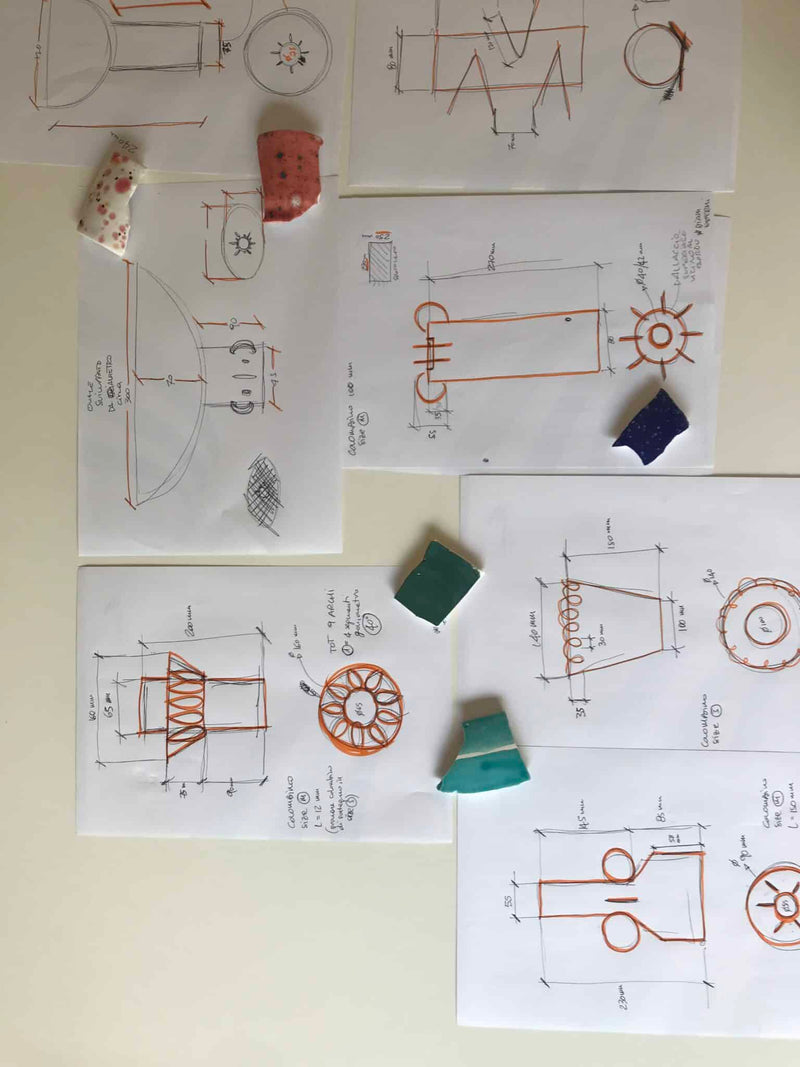
Your journey into ceramics is deeply rooted in the rich artistic heritage of Castelli. What first drew you to this world, and how has your background in industrial and interior design influenced your work?
I grew up in a small town near Castelli, so I have always felt connected to this place and its artisans. When I moved back to Italy as an adult, I decided it was time to explore the local ceramic heritage more deeply and learn the craft myself. My background in industrial and interior design gave me a structured approach to form, but ceramics offered a more expressive, intuitive process. I like to think my work sits at the intersection of these two worlds.
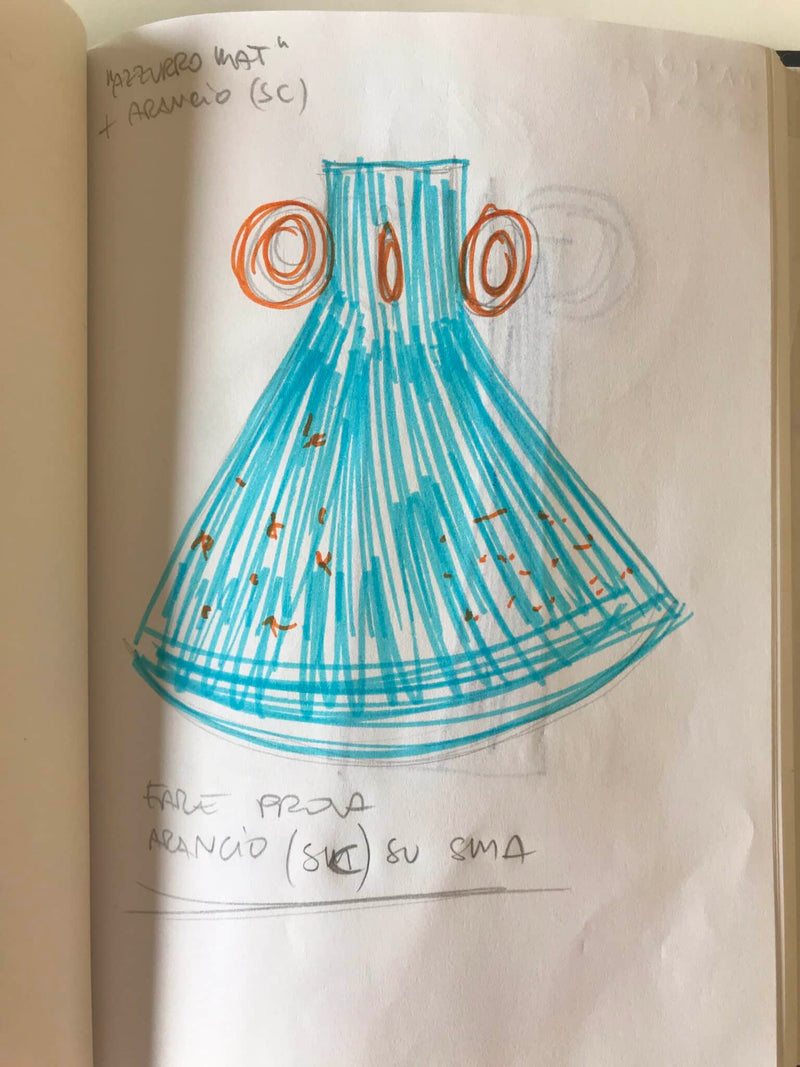
Your ceramics are often described as vibrant, playful, and full of personality. How do you approach creating objects that feel like “characters” in the home?
For me, objects have a presence. I think about ceramics almost like people—each piece has a unique form, attitude, and energy. The idea is that they don’t just decorate a space but interact with it, bringing a sense of joy and curiosity. I am extremely interested in the emotional connection we develop with objects and how its design can trigger and influence this connection.
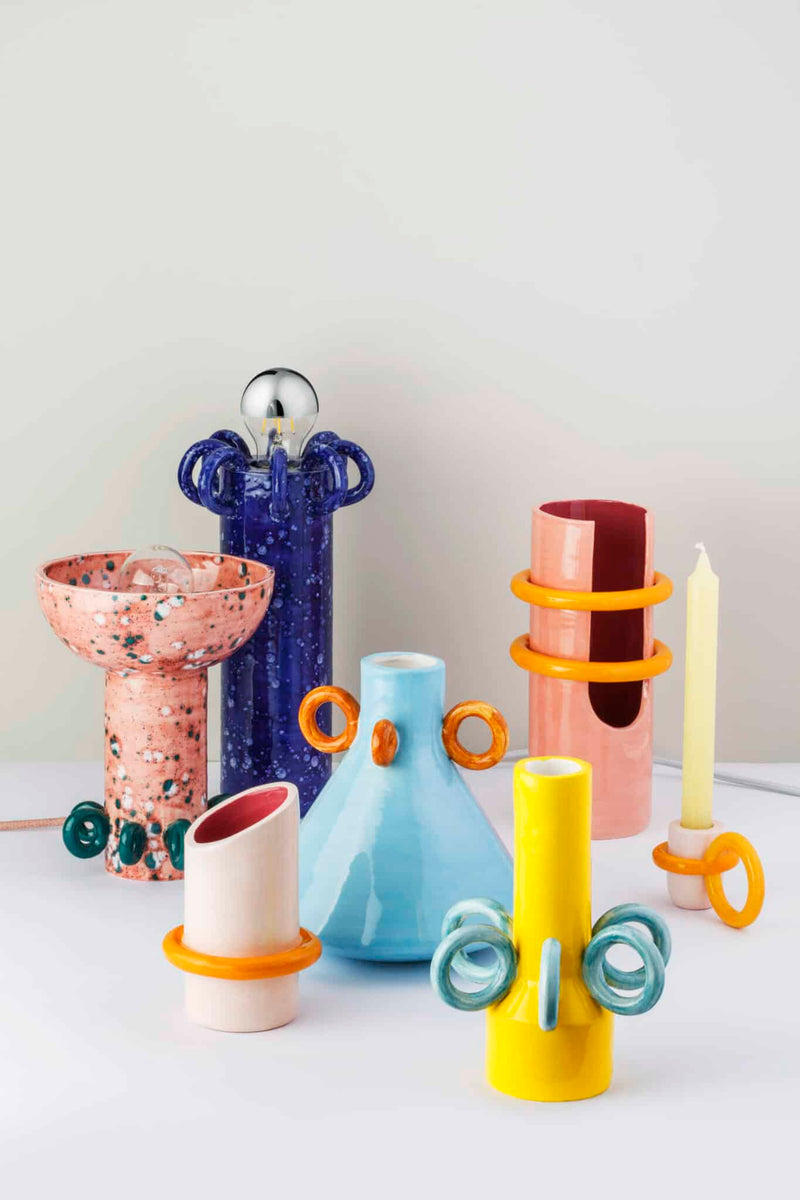
Your work pays homage to Mediterranean culture while reinterpreting traditional motifs in a contemporary way. How do you strike a balance between honoring heritage and pushing creative boundaries?
I see tradition as a starting point rather than a constraint. The Mediterranean is full of rich visual languages—from architecture to ceramics to textiles—but I like to break things down and rebuild them with a fresh perspective. I take familiar elements, like classic patterns or silhouettes, and give them a twist, whether through scale, color, or unexpected combinations. It’s about keeping the soul of the past alive while making it feel relevant today.
Colour is instinctive for me. I’m drawn to contrasts and combinations that feel energizing, almost like a visual language of emotions. My palettes are influenced by Mediterranean landscapes—sun-faded facades, deep blue seas, bright yellow lemons etc. I want my ceramics to evoke a sense of joy and lightness, like a perfect summer memory.
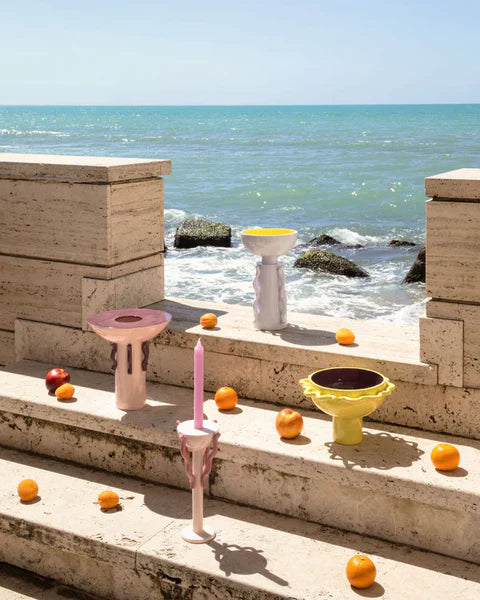
Many of your pieces seem to have a narrative quality, almost like they tell a story. Do you have a particular moment, place, or memory that has inspired a specific collection?
Yes, my pieces are rooted in storytelling, often capturing fragments of places, memories, and emotions. Riviera is a perfect example—it’s inspired by the atmosphere of the Adriatic coast, where time feels suspended between past and present. The collection reflects the nostalgia of long summer afternoons, the colors of seaside towns, and the lightness of vintage beach culture.
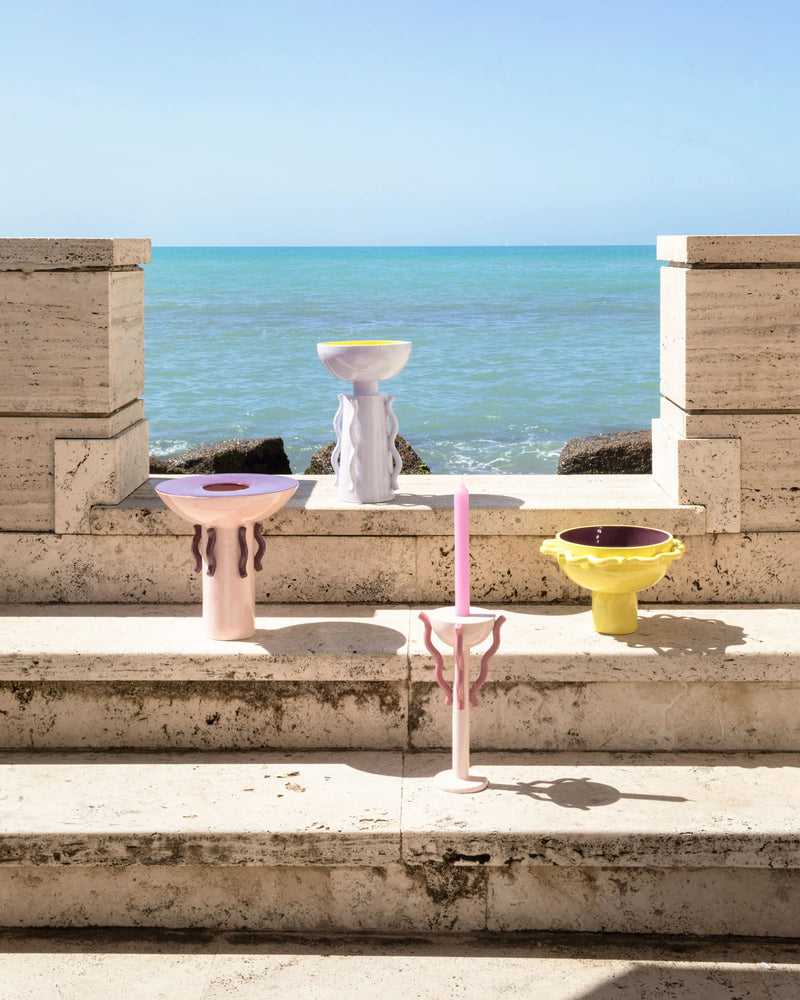
Artisanal craftsmanship is at the heart of what you do. Can you tell us about the techniques you use and any particularly challenging or rewarding aspects of working with ceramics?
I primarily work with hand-building techniques and slip-casting, depending on the piece. The magic of ceramics is that it’s both precise and unpredictable—glazes behave differently in the kiln, and imperfections often become part of the charm. One of the biggest challenges is achieving consistency and precision while keeping the soul of handmade work alive, but that’s also what makes it so rewarding.
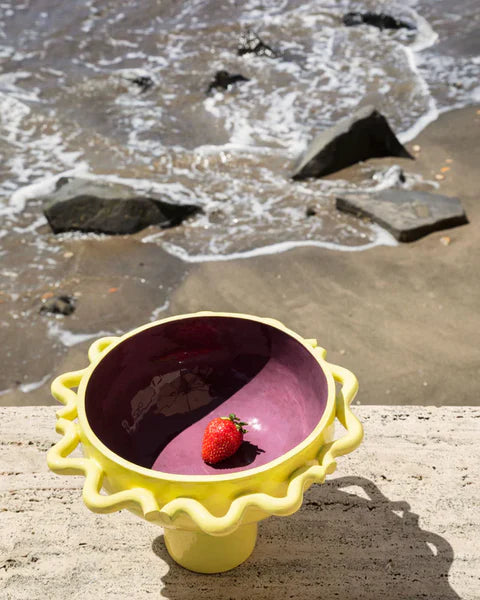
You’ve mentioned the importance of nostalgia in your work. Are there specific artists, designers, or cultural references that have influenced your aesthetic?
Absolutely. Nostalgia plays a central role in my work, shaping an aesthetic that feels both timeless and familiar. I’m especially inspired by Luigi Ghirri’s dreamlike compositions and La Dolce Via by Charles Traub, both of which capture fleeting moments of Italian life with warmth and spontaneity. Their ability to transform everyday scenes into poetic narratives influences how I approach form, color, and atmosphere—creating pieces that feel like tangible fragments of memory.
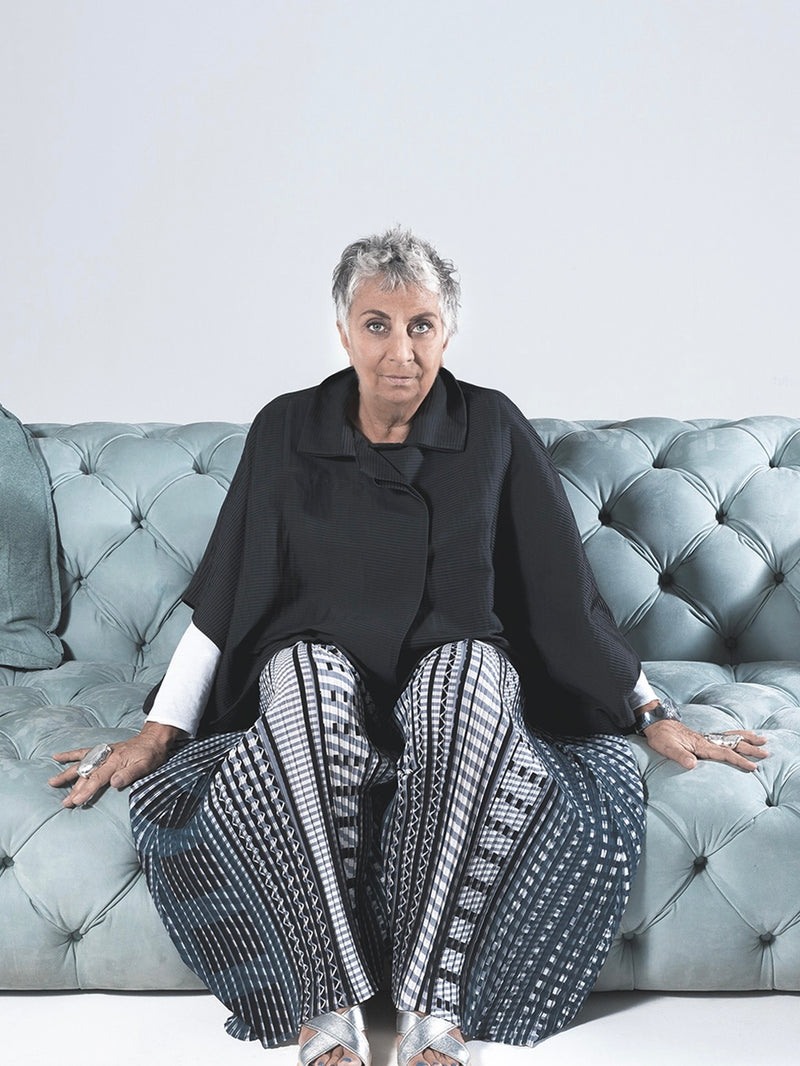
If you could collaborate with any contemporary designer or artist to create a special collection, who would it be and why?
I’d love to collaborate with architects or furniture designers to create a multidisciplinary collection that merges ceramics with another medium. I would love to create details and parts for joineries or other furniture pieces. For example I would love to collaborate with Paola Navone as she integrates a lot of ceramics in her works in a very beautiful way.

Which artists or makers are inspiring you right now?
I find very interesting the works of Bertrand Fompeyrine and Nienke Sikkema, love their playful yet extremely well crafted works and of course I love their colours.
For someone looking to bring more artistry and personality into their home, what advice would you give on choosing or displaying ceramics?
Choose pieces that speak to you emotionally rather than just matching a space. Ceramics have so much presence, so don’t be afraid to mix styles or place them in unexpected spots. Treat them as living elements rather than static decor.
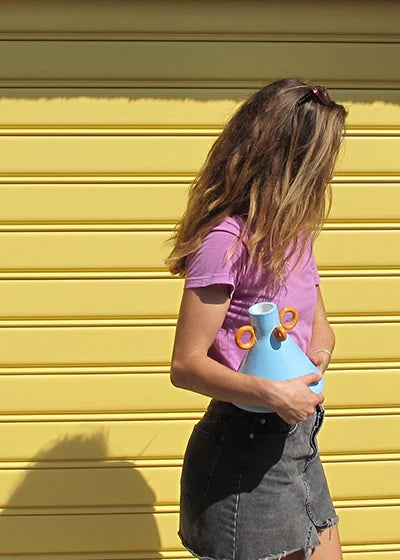
A Guide To Abruzzo & Beyond
What’s one hidden gem in your region that you think every design lover should visit?
Design lovers should visit Guardiagrele to experience its rich heritage of finely handmade gold and silver jewelry, wrought iron "ferro battuto," and copper, and of course Castelli for its renowned tradition of ceramics, where centuries-old craftsmanship meets timeless artistry.
Where do you go when you need a creative reset or inspiration?
Definitely to the beach. Best beaches in Abruzzo are in the Costa dei Trabocchi, these places are beautiful and so relaxing. You have the perfect blend between countryside and seaside.
Do you have a favourite place to source vintage or artisanal homeware?
Again I would go to Castelli and Guardiagrele, you will be surprised the amazing things you’ll find there.
If someone is visiting Italy for the first time and wants to experience true craftsmanship, where should they go?
Florence for leather and gold, Murano for glass, Vietri, Caltagirone and Grottaglie for ceramics—each region offers something special!


















































